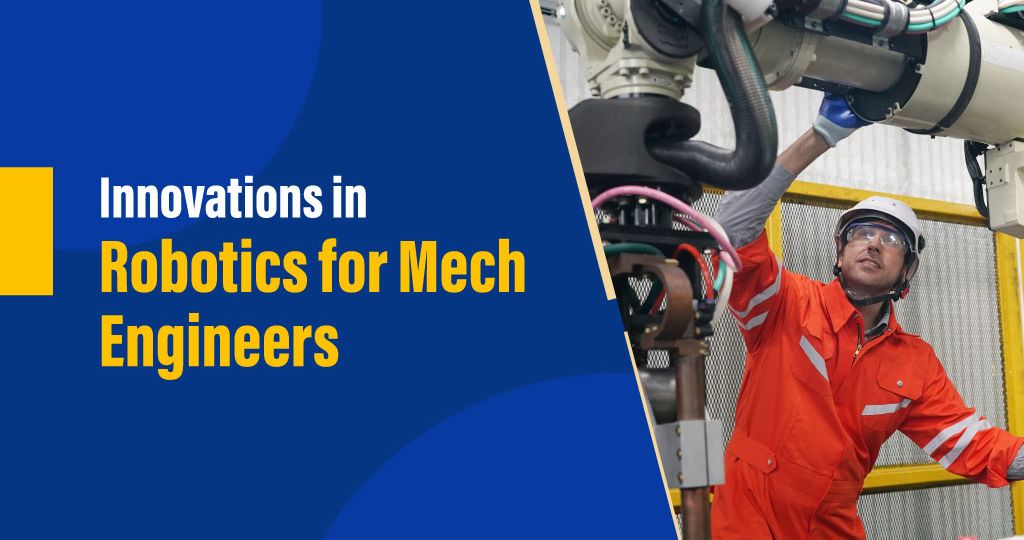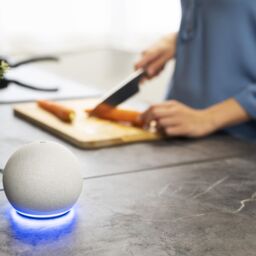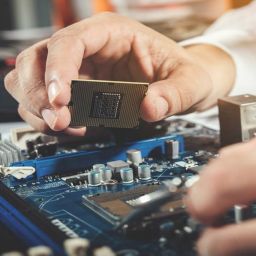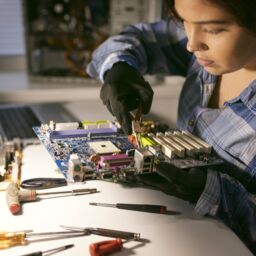
The Robotics field has witnessed revolutionary progress in diverse industries. The visible technological revolution in mechanical engineering is because this discipline is crucial in the design, development and implementation of robotic systems. The Top Engineering Colleges For Mechanical Engineering are now detailing and giving opportunities for the students to learn the trending technologies which are going to be useful for future careers. This article provides the highlights of innovations in robotics for mechanical engineers.
Mechanical Engineering and Robotics:
Robotics and mechanical engineering are distinct fields, yet share a mutual relationship. Robotics involves designing, building and employing machines which are capable of autonomous action and think similarly to humankind.
- Mechanical engineering is the study of the practical aspects of machines, including their construction, design, and powertrains. But the common thread throughout all fields is the use of machines to solve problems.
- Recent advances in robotics and mechanical engineering have been driven by technological innovations. various advancements highlight the dynamic character of various industries, from the manufacturing industry adopting 3D printing to deploying robotics to automate factory procedures.
- Professionals in robotics and mechanical engineering are ready to take advantage of the opportunities even if there are potential challenges.
Top Innovations in Robotics for Mechanical Engineers:
- Robots are now capable of learning from their experiences and enhancing their performance continuously because of the integration of artificial intelligence (AI) and machine learning (ML).
Robots with complex algorithms are better able to execute decisions, react to changes in their environment, and maximize the efficiency of their actions. Thus, these are capable of real-time object detection and classification, which makes them ideal for jobs like packaging and classifying utilities. These AI-powered robots prove that they are AI-powered robots capable of managing difficult conditions without human assistance. - RPA lowers human interaction and increases efficiency in corporate operations by automation repetitions and based on rules tasks with software robots. RPA already prevails in various industries including finance, healthcare, and logistics which can easily do human tasks like data entry, invoicing, and customer service. It is also used in customer service to handle routine questions, in HR to automate recruiting procedures, and in finance to automate data input and validation operations.
- Robotics and automation are used for autonomous vehicles, such as self-driving cars and trucks. Secondly, drones which are frequently utilized for mapping, transport, and surveillance purposes; their autonomous capabilities increase both their reliability and effectiveness. However, the use of autonomous cars in public transit is a possibility to improve safety and effectiveness.
- Humanoid robots are created for use in customer service, healthcare, and entertainment. with the ability to copy and imitate human activities. These innovations are possible with the use of artificial intelligence and natural language processing developments in the creation of humanoid robots. It can communicate with people and are now employed in retail and hospitality industries. It provides functions including informative customer service and greetings.
- Robotic component manufacturing uses 3D printing, which enables complex and personalized solutions. This technique makes it possible to produce robotic parts at a low price and with quick prototyping. Customized robotic components can be produced via 3D printing based on certain design specifications. Innovations like 3D printing are used by robotics engineers for rapid prototyping, which allows for speedy modifications and upgrades.
Challenges Faced by Mechanical Engineers in Robotics
- Small and compact options are frequently required in robotics to improve mobility and efficiency. The task for mechanical engineers is to create complex mechanisms that are both lightweight and strong, fit into constrained spots and work as best they can. Finding this balance is not simple, and it will probably require some sort of trial and error.
- Robotic systems with exact manipulation and control are the domain of mechanical engineers. To improve robotic systems’ performance, contact, protests, and vibration issues must be resolved. This is particularly important when developing robotic grippers, arms, and mobile platforms that can accurately and efficiently do complex tasks.
- For mechanical engineers, choosing the right material for robot parts is a crucial task. Working in adverse settings, such as high or low temperatures, excessive moisture, or toxic conditions, is a common task for robotics. For reliability over time and functionality, engineers must consider aspects like strength, weight, durability, and resistance to environmental influences when selecting materials for various components.
Conclusion: Mechanical engineering is now rapidly expanding more specifically in the field of robotics and offers opportunities and challenges. The need for mechanical engineers to create robots that can safely and effectively operate alongside people has arisen from the innovation of collaborative robots, or cobots. The best mechanical engineering colleges in Tamil Nadu provides the required space for the students to learn the robotics, its concepts in a desire to innovate or resolve the existing challenges in robotics. Mechanical engineers can find opportunities in various fields like research and development, manufacturing automation, medical robotics, and agricultural and exploration robotics.















